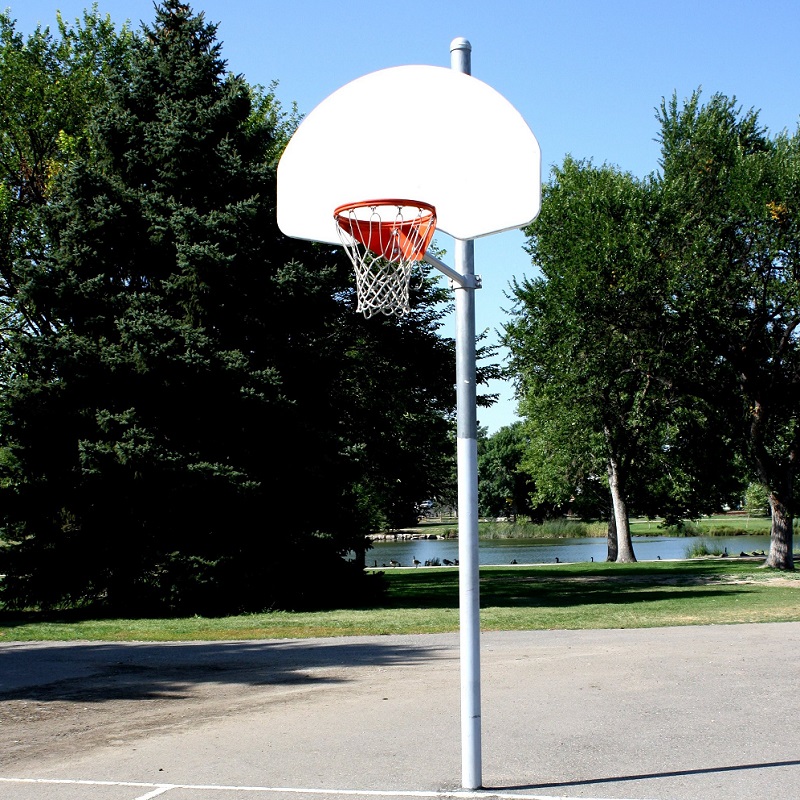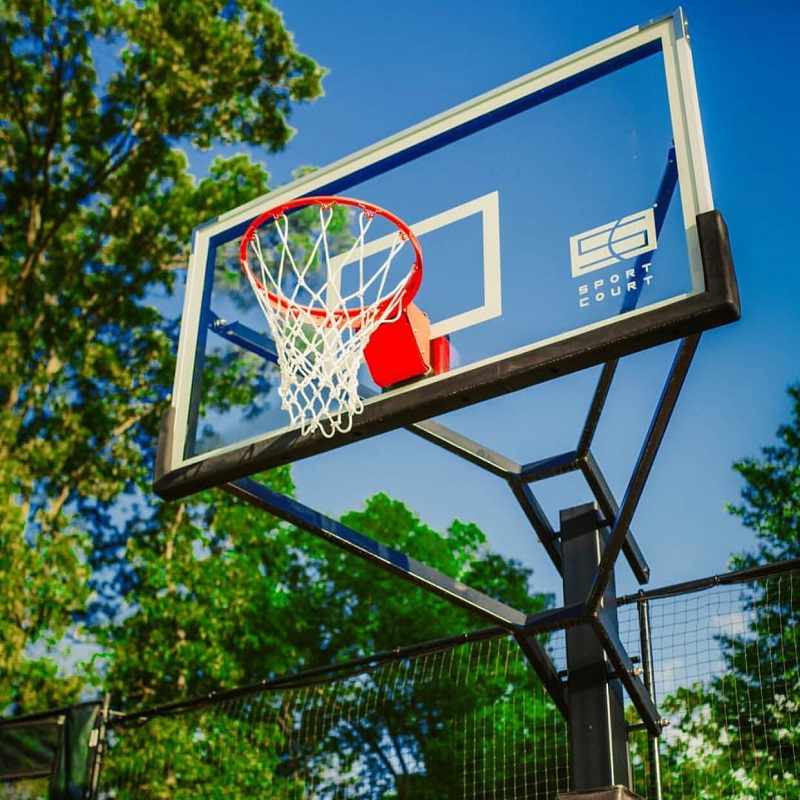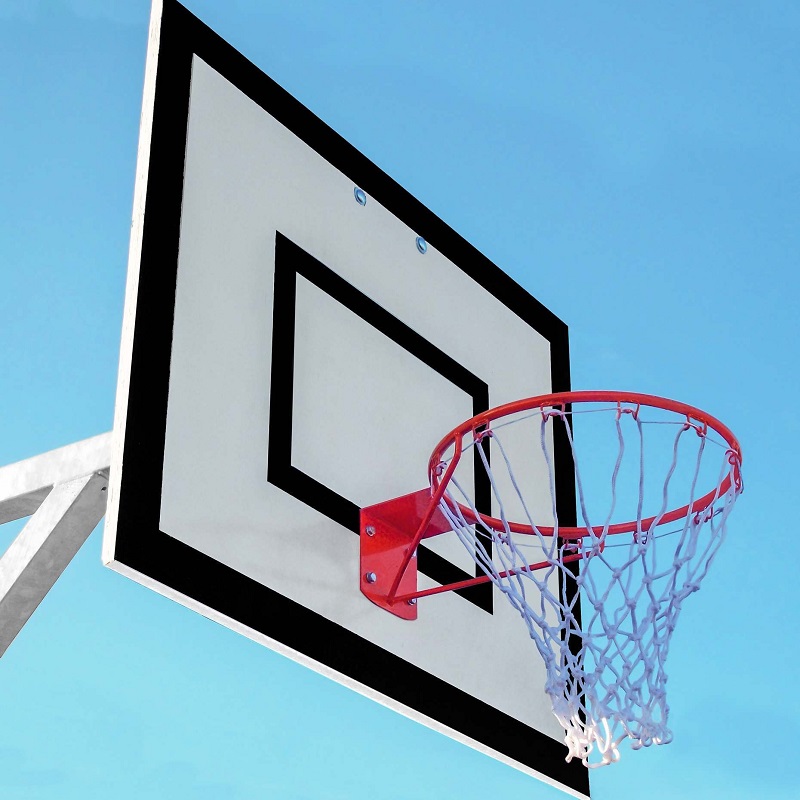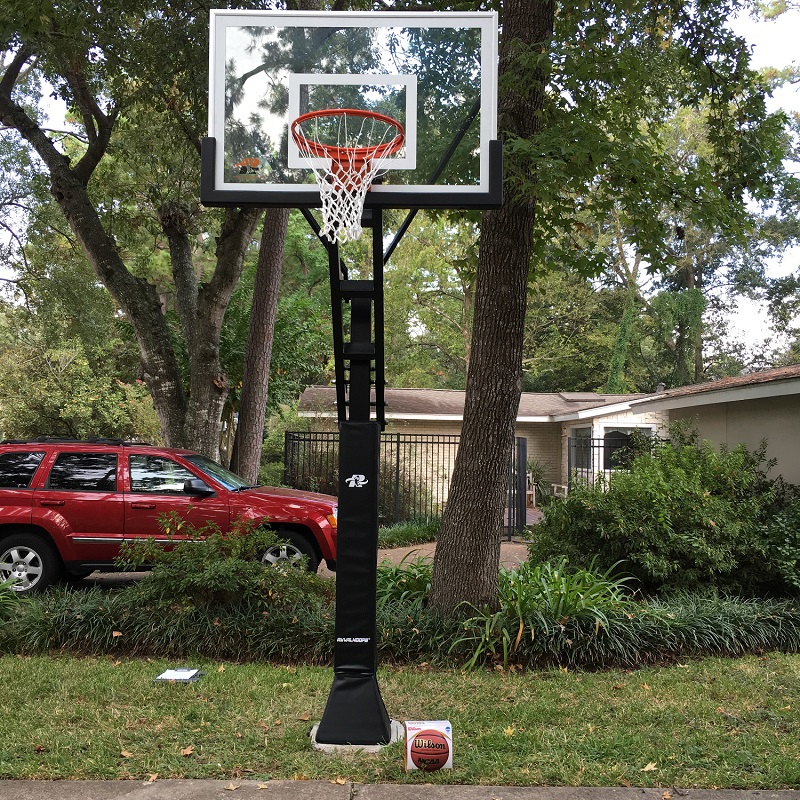Introduction
If you’ve ever played basketball or watched a game, you might have wondered, how high is a basketball hoop? Understanding the height of the hoop is fundamental to the sport, as it influences performance, skill development, and overall enjoyment. Whether you’re a recreational player, a parent setting up a home court for your child, or a coach preparing your team for competition, knowing the standard height of the basketball hoop is essential.
In this article, we will delve into the heights of basketball hoops for different age groups and levels of play. Additionally, we’ll discuss how the height affects gameplay, training practices, and more. Furthermore, we will address why knowledge of hoop height matters, particularly for young and developing players.
The Standard Height of a Basketball Hoop
To start, the standard height of a basketball hoop is 10 feet (3.05 meters). This regulation height has been universally accepted for official games, including the NBA, WNBA, NCAA, and international competitions. Not only does maintaining a consistent height allow players to develop skills that translate across various competition levels, but it also creates a unified framework for play.
Regulation Height in Professional Basketball
In professional leagues like the NBA and WNBA, the rim height of 10 feet enables athletes to showcase their skills at the highest level. Here, players utilize their jumping ability, shooting range, and defensive skills to excel. Therefore, this standardized height helps foster an environment where athletes can refine their talents and prepare for high-stakes games.
The Physics of Professional Play
Moreover, within the high-pressure environment of professional basketball, the height of the hoop plays a critical role in the physical aspects of the game. Coaches and sports scientists analyze how varying heights can affect shot angles, rebounds, and overall plays. Generally speaking, players rely on a combination of their physical conditioning and strategic planning to capitalize on the 10-foot hoop. Consequently, understanding the physics involved in shot dynamics becomes essential for players aiming to master the game.
NCAA and Youth Level
Similarly, the NCAA maintains the same regulation height of 10 feet for collegiate competitions. However, youth basketball organizations frequently adjust the hoop height based on age and skill level. For instance, players aged 9 to 11 typically shoot at hoops set at 9 feet (2.74 meters). This lowered height aids in their development, allowing them to enhance their shooting and driving skills without the hurdle of an overly challenging rim height.
Lowering the Height for Development
In addition, decreasing the hoop height provides significant advantages for young athletes. When they practice shooting at lower heights, they can focus on building proper shooting techniques without the added pressure of trying to shoot at the regulation height. Consequently, these younger athletes develop a sense of confidence in their skills, creating a strong foundation for advanced training as they progress.

How the Height Affects Gameplay
Understanding how high is a basketball hoop will shed light on its implications for gameplay at various levels. The height directly impacts a player’s ability to execute fundamental skills, such as shooting, driving, and rebounding. Here’s how hoop height affects different aspects of the game:
1. Shooting Skills
At 10 feet, the standard hoop height provides the right challenge for skilled players. However, for younger athletes with smaller hands and less upper body strength, reducing the hoop height allows them to practice their shooting form, boost their confidence, and develop the essential techniques for scoring effectively. As a result, this supportive environment cultivates better shooting mechanics and encourages players to improve their skills.
2. Dunking Ability
As athletes grow and develop their skills, dunking becomes a significant aspect of the game. Naturally, players aiming to dunk must possess both vertical leap and precise timing. Therefore, creating a lower hoop for younger players enables them to practice this crucial skill without the risk of injury that can arise from attempting to reach a higher rim too early. Additionally, as players develop their athleticism, they can transition to the regulation height and further enhance their dunking abilities.
3. Encouraging Young Players
In youth basketball, adjusting the hoop height fosters a love for the game. When younger players achieve success by making shots and executing plays, they naturally become more motivated to train and improve. Consequently, while most high school and collegiate athletes will ultimately return to the standard height of 10 feet, early exposure to proper gameplay mechanics is essential for their development.
4. Physical Conditioning
Additionally, athletic training often becomes more specialized as players hone their skills. Young athletes benefit from adjusting their training routines to accommodate varying heights, focusing on explosive jumps, shooting form, and hand-eye coordination. These essential components correlate directly to a player’s ability to handle the standard hoop height as they make progress in their development.

Adjustable Hoops: Tailoring Height to Individual Needs
For those seeking to customize their basketball experience, adjustable hoops present an excellent option, particularly for families with children. These hoops allow users to set the height according to their needs, making them ideal for multi-age households or basketball leagues centered on youth development.
Benefits of Adjustable Hoops
- Encouraging Skill Development: Families can modify the hoop height as children grow, allowing them to gradually progress to the standard height. By doing so, they build shooting confidence and focus on developing their skills systematically.
- Versatility for Different Ages: Additionally, adjustable hoops can cater to a range of ages and skill levels. This versatility makes them perfect not only for beginners but also for experienced athletes looking to refine their skills, thereby enhancing their basketball experience.
- Cost-Effective Long-Term Use: Investing in an adjustable basketball hoop proves to save money over time. Rather than wasting resources on new hoops as children grow, families can adapt their current setup. The sustainability of adjustable hoops makes them a worthwhile investment for years of family fun.
- Creating a Fun Learning Environment: Furthermore, having a flexible height creates a more enjoyable atmosphere, which encourages children to practice more frequently. As a result, this leads to valuable experiences that may foster a lifelong love for the sport.

Choosing the Right Hoop Height for Kids
When determining how high a basketball hoop should be for children, it’s crucial to consider their age and skill level. Below are some general guidelines for hoop height recommendations:
1. Ages 5-7
For this age group, a height of 6 to 7 feet is advisable. Lowering the hoop allows these young players to focus on mastering basic fundamentals, including dribbling, shooting, and passing. In this way, they can build foundational skills that will serve them as they grow. Moreover, parents can join in and play with their kids, encouraging engagement in a fun and nurturing environment.
2. Ages 8-10
Moving on to slightly older kids, a hoop height of 8 to 9 feet is suggested. At this stage, players begin to develop more strength and coordination, which helps them adjust to higher rims while still enjoying success in their efforts. More importantly, this transitional phase allows them to refine their basic skills continuously.
3. Ages 11 and Up
Players aged 11 and older should transition to the standard 10 feet height. While this height may pose a challenge, it prepares them for competitive basketball environments they are likely to encounter in high school and beyond. Beyond that, this age group can begin to explore and implement more complex skills related to shooting, ball handling, and game strategy.
4. Assessing Individual Needs
As players develop, assessing their individual capabilities is crucial. Some might experience quicker growth physically, while others may possess natural abilities that allow for faster skill acquisition. Thus, adjusting the height according to each child’s confidence and skill levels can foster personalized growth trajectories.

The Importance of Consistency in Hoop Height
Although it is tempting to alter basketball hoop heights for convenience, maintaining consistency is crucial as players develop their skills. Here’s why:
1. Building Confidence
Consistent practice at the same hoop height helps players build their self-assurance. If hoops are continually being adjusted, players may struggle to master their shots, leading to uncertainty about their abilities. To this end, establishing a consistent environment fosters skill mastery and the confidence that comes with it.
2. Developing Fundamental Skills
Moreover, exploring various heights can dilute the process of mastering fundamental skills. By adhering to the standard height as players progress, they can develop their shooting, rebounding, and defensive skills more effectively. Therefore, consistency allows them to prepare adequately for the challenges they’ll face in higher-level competitions.
3. Creating a Seamless Transition
When players practice at the same height they will face in games, they are better prepared for competitive environments. For example, high school and collegiate players who have honed their skills at 10 feet will feel confident when competing in official games. This transition helps minimize performance anxiety that can come with unfamiliar conditions.
4. Building a Training Plan
Establishing a training plan centered around consistent hoop height enables focused practice sessions that target specific skills. Players can effectively evaluate their growth and adjust training activities according to their performance metrics. A streamlined approach to training instills discipline and better prepares athletes for competition.

Conclusion
So, how high is a basketball hoop? The standard height is 10 feet, which has been widely accepted in professional, collegiate, and many youth competitions. However, as we’ve explored in this article, understanding the importance of hoop height extends far beyond merely knowing the numbers. Factors such as age, skill level, and development play crucial roles in determining the appropriate height for budding athletes.
Adjustable hoops serve as an excellent option for families and players who want to adapt the hoop height as children grow, ensuring continued skill development and enjoyment of the game. By maintaining proper hoop height throughout their journeys, players can focus on building their confidence, mastering fundamental skills, and transitioning seamlessly into higher levels of competition.
Understanding the significance of hoop height is vital for parents, coaches, and young players alike. As basketball continues to evolve and thrive, players equipped with the knowledge of appropriate hoop heights can set themselves up for success, growth, and enjoyable experiences on the court. Ultimately, the height of a basketball hoop is not just a number; it signifies opportunities for learning and growth in the sport.
